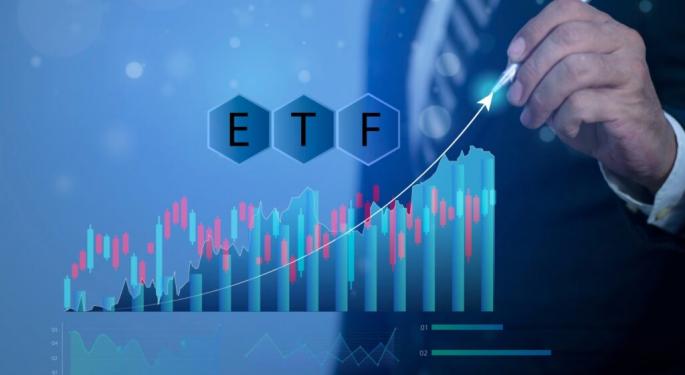Fed Rate-Cut Chorus Grows Louder: Could This Be A Breakout Moment For Growth ETFs?
More Federal Reserve officials are now indicating that the central bank would soon begin an interest rate–reducing cycle, a move which can pave the way for a growth-oriented ETF rally.
VUG ETF is up in double digits so far this year. Check out live prices here.
Why Growth ETFs Stand To Benefit
Reducing the interest rates lowers the cost of borrowing, making it less expensive for companies, especially high-growth ones, to fund growth. Rate reductions also reduce the attractiveness of fixed-income instruments, drawing investors into equities in pursuit of higher yields. This package tends to provide growth stocks, and the ETFs that follow them, an advantage in terms of performance.
In the months after previous rate decreases, growth funds have been outpacing value funds as investor demand moves toward firms with greater potential for earnings.
Three Growth ETFs To Watch
Vanguard Growth ETF (NYSE:VUG) – Among the largest growth ETFs available in the market, VUG mirrors the CRSP U.S. Large Cap Growth Index and provides exposure to megacap names such as Apple Inc (NASDAQ:AAPL), Microsoft Corp (NASDAQL MSFT), and Amazon.com Inc (NASDAQ:AMZN). Its diversified portfolio and low cost make it a favorite of long-term growth seekers.
Invesco S&P 500 Pure Growth ETF (NYSE:RPG) – RPG is a more concentrated product that zeroes in on stocks in the S&P 500 that rate most highly on growth drivers such as sales growth and momentum. This makes it more volatile than general growth funds but more sensitive to changes in investor sentiment in rate-cut cycles.
iShares S&P 500 Growth ETF (NYSE:IVW) – IVW is another large-cap growth play with a tilt towards sectors such as technology and consumer discretionary, which tend to gain from lower borrowing costs. Its holdings overlap with VUG but bear a slightly different weighting methodology.
Fed Governors Speak Out
Fed Gov. Michelle Bowman stated on Saturday that she is considering three interest rate cuts this year due to rising concerns over the health of the U.S. labor market and weakening economic growth. She cautioned that postponing the cuts could lead to a weakening in labor market conditions and further slowing in economic growth, adding that job creation has slowed to only 35,000 a month during the past three months — an indication of “meaningful softening” in labor demand.
Bowman opposed the Fed’s move last month to leave rates steady, opting for a 0.25% reduction to move policy towards neutral from its present moderately restrictive stance. She also downgraded recent inflationary pressures from tariff increases, labeling them a “one-time effect” that the Fed can look through.
Her remarks are similar to those of San Francisco Fed President Mary Daly, who similarly intimated the central bank could see the need to slash rates within the next few months, even with near-term pressures on prices. Minneapolis Fed President Neel Kashkari and Fed Gov. Chris Waller have spoken similarly, further cementing the narrative that rate cuts would commence as early as September.
Markets are today betting big on a September move. Investors, based on CME Group data, are betting close to an 87% chance that the Fed will cut its benchmark range to 4%–4.25% from 4.25%–4.5% at its next meeting.
The Macro Catalyst: Tuesday’s CPI Report
The next U.S. inflation print will be crucial to the puzzle. A soft reading would seal the argument for a September rate cut, which could do something to speed flows into growth ETFs.
With key Fed officials now openly sounding dovish and markets more convinced that rate cuts are coming, the next few weeks may prove pivotal for investors trying to position for a possible growth ETF breakout.
Read Next:
Photo: bigjom jom via Shutterstock
© 2025 Benzinga.com. Benzinga does not provide investment advice. All rights reserved.
Posted-In: Stories That MatterSpecialty ETFs Top Stories Federal Reserve ETFs



